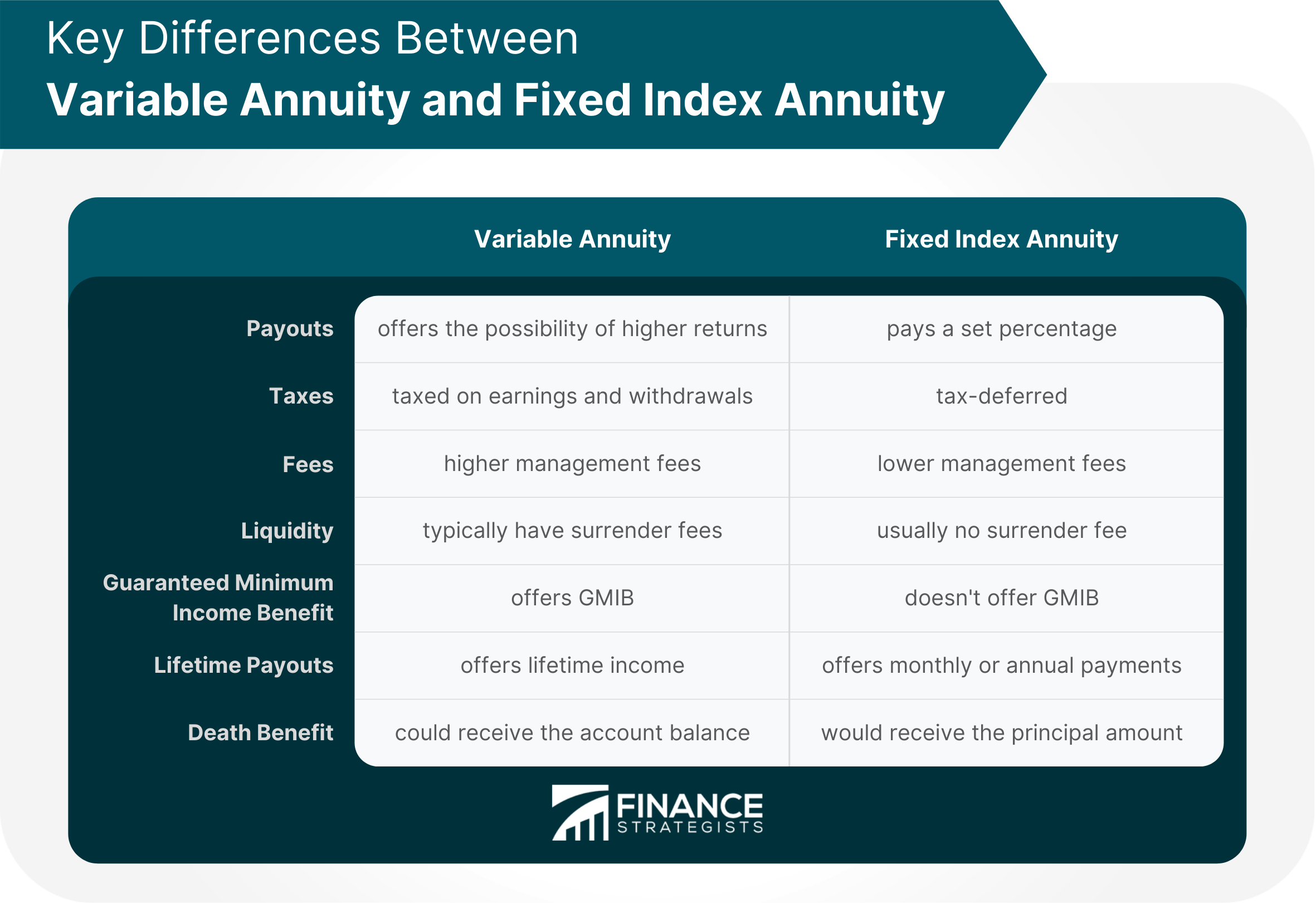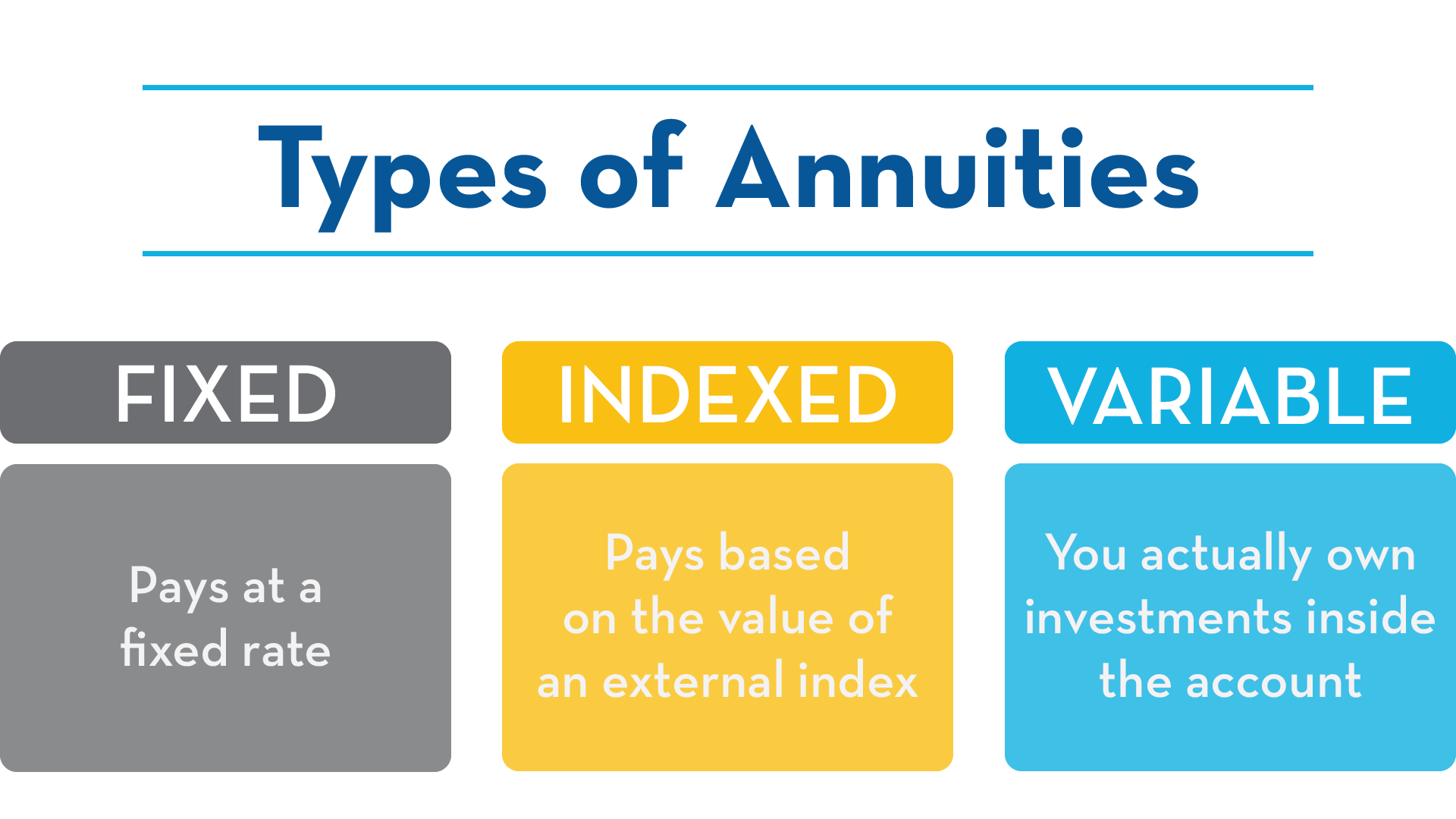Featured
Table of Contents
The repayment might be invested for development for an extended period of timea solitary costs postponed annuityor invested for a brief time, after which payout beginsa single premium prompt annuity. Solitary costs annuities are frequently moneyed by rollovers or from the sale of a valued property. A versatile premium annuity is an annuity that is meant to be moneyed by a series of repayments.
Proprietors of dealt with annuities understand at the time of their acquisition what the worth of the future cash flows will be that are generated by the annuity. Certainly, the number of cash money circulations can not be known beforehand (as this relies on the contract owner's lifespan), yet the assured, taken care of rate of interest at the very least gives the proprietor some degree of assurance of future earnings from the annuity.
While this distinction appears easy and straightforward, it can substantially impact the value that a contract proprietor inevitably originates from his/her annuity, and it produces significant uncertainty for the agreement proprietor - Lifetime income from annuities. It also normally has a product effect on the degree of charges that an agreement proprietor pays to the issuing insurance company
Fixed annuities are commonly made use of by older capitalists who have limited possessions yet who desire to counter the danger of outlasting their assets. Fixed annuities can function as a reliable device for this purpose, though not without specific drawbacks. For instance, when it comes to immediate annuities, once an agreement has actually been bought, the contract owner relinquishes any kind of and all control over the annuity assets.
Exploring the Basics of Retirement Options A Comprehensive Guide to Investment Choices Defining the Right Financial Strategy Features of Smart Investment Choices Why Choosing the Right Financial Strategy Is a Smart Choice How to Compare Different Investment Plans: Simplified Key Differences Between Annuities Fixed Vs Variable Understanding the Risks of Fixed Vs Variable Annuity Who Should Consider Strategic Financial Planning? Tips for Choosing the Best Investment Strategy FAQs About Indexed Annuity Vs Fixed Annuity Common Mistakes to Avoid When Planning Your Retirement Financial Planning Simplified: Understanding Variable Annuity Vs Fixed Annuity A Beginner’s Guide to Fixed Income Annuity Vs Variable Annuity A Closer Look at How to Build a Retirement Plan
An agreement with a common 10-year surrender period would bill a 10% abandonment cost if the agreement was surrendered in the first year, a 9% surrender charge in the 2nd year, and so on till the abandonment fee gets to 0% in the contract's 11th year. Some postponed annuity contracts have language that enables little withdrawals to be made at numerous intervals throughout the abandonment duration without penalty, though these allowances normally come with an expense in the form of reduced guaranteed rates of interest.
Equally as with a dealt with annuity, the owner of a variable annuity pays an insurer a round figure or collection of repayments in exchange for the assurance of a series of future settlements in return. As pointed out above, while a repaired annuity expands at a guaranteed, continuous rate, a variable annuity expands at a variable price that depends upon the efficiency of the underlying investments, called sub-accounts.
During the build-up phase, possessions bought variable annuity sub-accounts grow on a tax-deferred basis and are strained just when the contract proprietor withdraws those incomes from the account. After the accumulation phase comes the earnings stage. Gradually, variable annuity assets must theoretically enhance in worth until the agreement owner chooses he or she want to start withdrawing cash from the account.
The most substantial problem that variable annuities usually present is high expense. Variable annuities have several layers of costs and costs that can, in accumulation, create a drag of up to 3-4% of the agreement's value each year.
M&E cost costs are determined as a percent of the contract value Annuity issuers pass on recordkeeping and other management costs to the agreement owner. This can be in the type of a flat annual cost or a percentage of the contract worth. Administrative costs might be consisted of as part of the M&E risk fee or might be analyzed independently.
These fees can vary from 0.1% for easy funds to 1.5% or more for actively managed funds. Annuity agreements can be customized in a variety of ways to serve the details requirements of the agreement proprietor. Some usual variable annuity motorcyclists consist of ensured minimum accumulation advantage (GMAB), assured minimum withdrawal benefit (GMWB), and assured minimal income advantage (GMIB).
Decoding How Investment Plans Work Key Insights on Your Financial Future What Is Fixed Annuity Vs Variable Annuity? Benefits of Fixed Index Annuity Vs Variable Annuities Why Choosing the Right Financial Strategy Is a Smart Choice How to Compare Different Investment Plans: How It Works Key Differences Between Different Financial Strategies Understanding the Rewards of Long-Term Investments Who Should Consider Strategic Financial Planning? Tips for Choosing the Best Investment Strategy FAQs About Variable Vs Fixed Annuities Common Mistakes to Avoid When Choosing Fixed Index Annuity Vs Variable Annuities Financial Planning Simplified: Understanding Fixed Annuity Or Variable Annuity A Beginner’s Guide to Fixed Annuity Vs Equity-linked Variable Annuity A Closer Look at Retirement Income Fixed Vs Variable Annuity
Variable annuity payments provide no such tax obligation deduction. Variable annuities tend to be extremely ineffective vehicles for passing wide range to the future generation because they do not delight in a cost-basis modification when the initial agreement proprietor dies. When the proprietor of a taxed investment account passes away, the cost bases of the financial investments kept in the account are gotten used to mirror the marketplace prices of those investments at the time of the owner's fatality.
For that reason, beneficiaries can acquire a taxed financial investment portfolio with a "tidy slate" from a tax perspective. Such is not the instance with variable annuities. Investments held within a variable annuity do not receive a cost-basis change when the initial owner of the annuity dies. This implies that any type of built up latent gains will be passed on to the annuity owner's successors, together with the associated tax obligation burden.

One significant issue associated to variable annuities is the potential for conflicts of passion that may feed on the component of annuity salesmen. Unlike a financial advisor, who has a fiduciary obligation to make financial investment choices that benefit the customer, an insurance broker has no such fiduciary responsibility. Annuity sales are extremely financially rewarding for the insurance coverage professionals who sell them due to high upfront sales payments.
Lots of variable annuity agreements contain language which puts a cap on the percent of gain that can be experienced by particular sub-accounts. These caps protect against the annuity proprietor from fully joining a part of gains that might or else be appreciated in years in which markets create substantial returns. From an outsider's perspective, presumably that investors are trading a cap on investment returns for the previously mentioned ensured flooring on financial investment returns.
Highlighting the Key Features of Long-Term Investments A Closer Look at Fixed Indexed Annuity Vs Market-variable Annuity Defining the Right Financial Strategy Features of Smart Investment Choices Why Choosing the Right Financial Strategy Matters for Retirement Planning Variable Annuity Vs Fixed Indexed Annuity: How It Works Key Differences Between Different Financial Strategies Understanding the Rewards of Long-Term Investments Who Should Consider Fixed Annuity Or Variable Annuity? Tips for Choosing What Is A Variable Annuity Vs A Fixed Annuity FAQs About Fixed Indexed Annuity Vs Market-variable Annuity Common Mistakes to Avoid When Planning Your Retirement Financial Planning Simplified: Understanding Fixed Annuity Vs Variable Annuity A Beginner’s Guide to Smart Investment Decisions A Closer Look at Indexed Annuity Vs Fixed Annuity
As kept in mind above, give up costs can significantly restrict an annuity owner's capacity to move properties out of an annuity in the very early years of the contract. Additionally, while most variable annuities permit contract proprietors to withdraw a defined quantity during the build-up stage, withdrawals yet amount commonly cause a company-imposed fee.
Withdrawals made from a fixed rates of interest financial investment choice could likewise experience a "market value adjustment" or MVA. An MVA adjusts the value of the withdrawal to reflect any type of adjustments in rate of interest from the time that the money was spent in the fixed-rate option to the moment that it was withdrawn.

Frequently, even the salesmen that market them do not fully recognize exactly how they function, and so salesmen sometimes take advantage of a purchaser's emotions to market variable annuities instead of the qualities and viability of the items themselves. Our company believe that financiers need to completely recognize what they have and just how much they are paying to own it.
The very same can not be stated for variable annuity possessions held in fixed-rate financial investments. These possessions legally belong to the insurance provider and would certainly for that reason go to danger if the company were to fall short. Any type of warranties that the insurance policy firm has actually agreed to give, such as an ensured minimal earnings advantage, would be in question in the occasion of an organization failing.
Highlighting the Key Features of Long-Term Investments Key Insights on Choosing Between Fixed Annuity And Variable Annuity Breaking Down the Basics of Investment Plans Advantages and Disadvantages of Different Retirement Plans Why Deferred Annuity Vs Variable Annuity Is Worth Considering How to Compare Different Investment Plans: Explained in Detail Key Differences Between Different Financial Strategies Understanding the Risks of Fixed Interest Annuity Vs Variable Investment Annuity Who Should Consider Variable Annuities Vs Fixed Annuities? Tips for Choosing Variable Vs Fixed Annuity FAQs About Planning Your Financial Future Common Mistakes to Avoid When Planning Your Retirement Financial Planning Simplified: Understanding Immediate Fixed Annuity Vs Variable Annuity A Beginner’s Guide to Fixed Indexed Annuity Vs Market-variable Annuity A Closer Look at How to Build a Retirement Plan
Prospective buyers of variable annuities must understand and take into consideration the economic condition of the issuing insurance policy company before getting in right into an annuity agreement. While the advantages and downsides of numerous sorts of annuities can be debated, the actual problem surrounding annuities is that of suitability. Place simply, the inquiry is: that should have a variable annuity? This concern can be hard to address, provided the myriad variants available in the variable annuity world, yet there are some standard guidelines that can aid financiers make a decision whether or not annuities should play a function in their economic strategies.
As the saying goes: "Purchaser beware!" This write-up is prepared by Pekin Hardy Strauss, Inc. ("Pekin Hardy," dba Pekin Hardy Strauss Wide Range Management) for informative purposes only and is not intended as an offer or solicitation for company. The information and information in this short article does not comprise legal, tax obligation, accounting, investment, or other specialist recommendations.
Table of Contents
Latest Posts
Analyzing Strategic Retirement Planning A Comprehensive Guide to Investment Choices Defining Choosing Between Fixed Annuity And Variable Annuity Benefits of Choosing the Right Financial Plan Why Fixed
Highlighting the Key Features of Long-Term Investments A Closer Look at How Retirement Planning Works Breaking Down the Basics of Investment Plans Pros and Cons of Fixed Annuity Or Variable Annuity Wh
Exploring Variable Annuity Vs Fixed Indexed Annuity A Comprehensive Guide to Fixed Annuity Or Variable Annuity What Is the Best Retirement Option? Features of Smart Investment Choices Why Fixed Index
More
Latest Posts